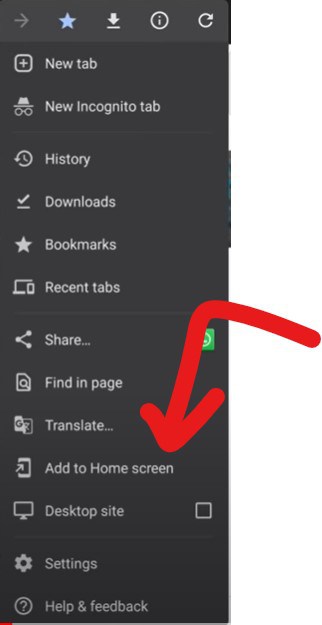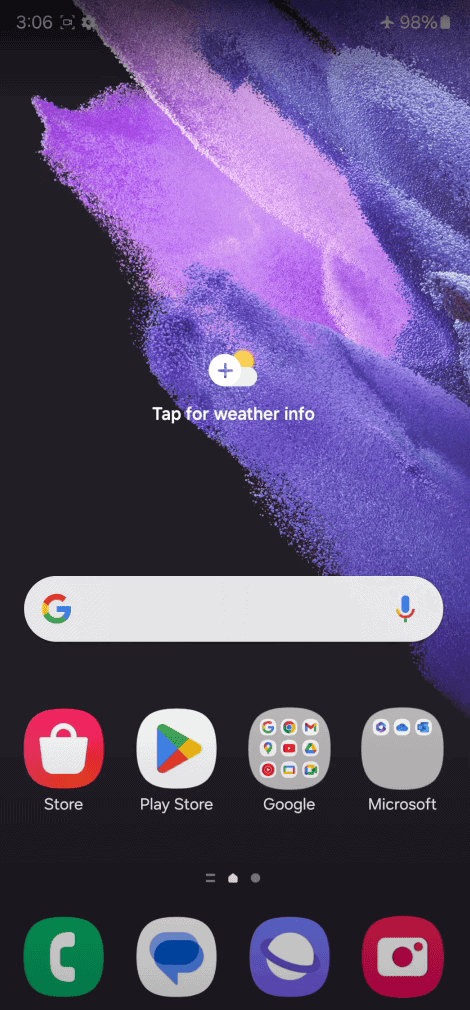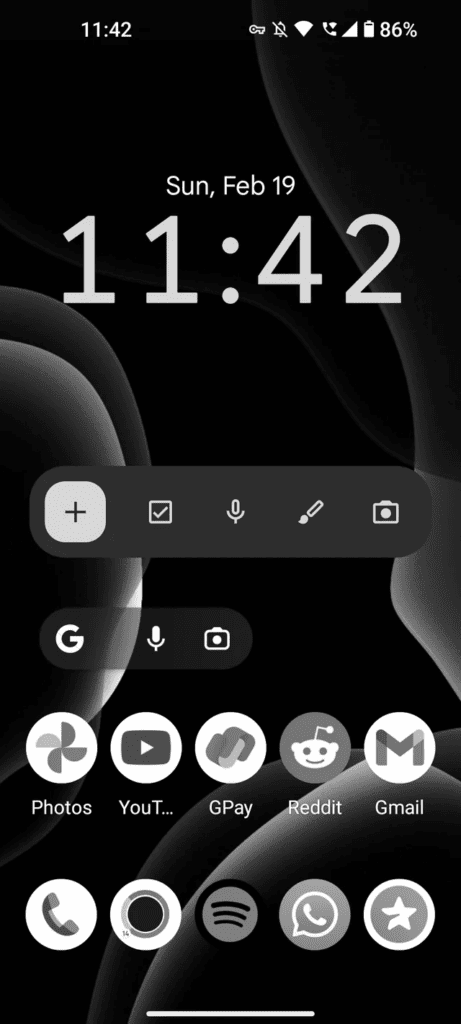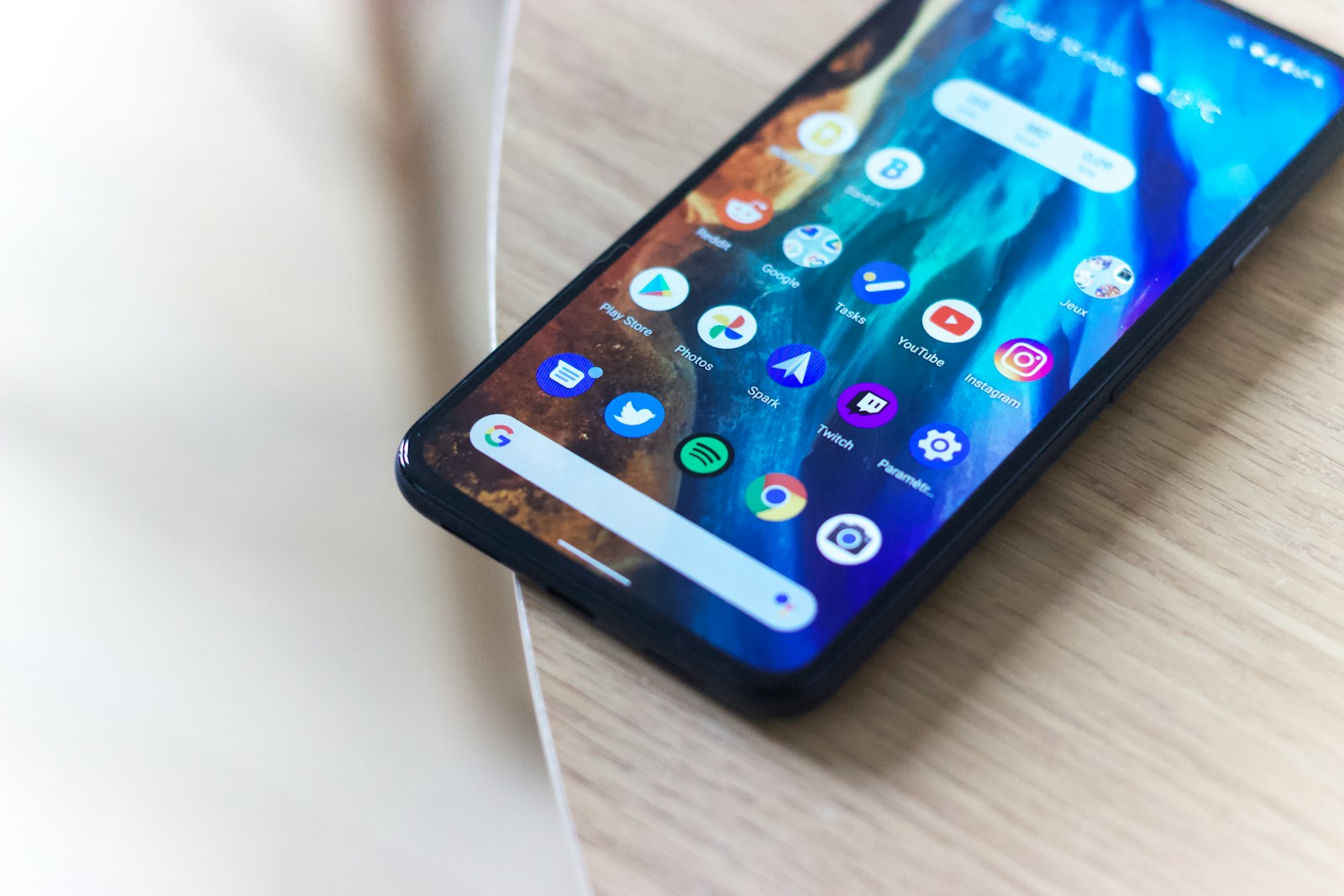Android offers lots of flexibility for customization. You can personalize almost everything on your device, from the home screen to the notification sounds. This guide will help you explore some ways to make your Android experience even better. Your home screen is the key to your digital world. It’s what you see first when you unlock your phone and where you access your most-used apps and information.
By customizing your home screen, you can arrange the layout, appearance, and functionality to match your preferences and simplify your mobile experience. In this guide, you’ll learn how to access and adjust your home screen settings, add widgets and shortcuts, and personalize the look and feel of your device. You’ll also find out how to reset your home screen to its default state if you ever want to start over.
Customize Your Android Phone

Personalizing Your Android Home Screen
Your home screen is like a blank canvas. Choose a launcher that suits your style, like Nova Launcher or Microsoft Launcher. These apps let you change the layout, icons, and even add widgets for quick access to information. Find a wallpaper that reflects your personality or interests, and use folders to keep your apps organized.

Accessing Home Screen Settings
The location of home screen settings can vary slightly depending on your Android device and launcher. However, the most common method is:
- Long-press on an empty area of your home screen.
- A menu or pop-up will appear.
- Look for an option like “Settings,” “Home Settings,” or “Wallpaper & style.”
- Tap on it to access your home screen settings.

Customizing Your Android Home Screen
Android offers various customization options to personalize your home screen experience:
- App Grid: Change the number of app icons that fit on your screen by adjusting the grid size in your home screen settings.
- Widgets: Add widgets to your home screen for quick access to information and functionality from your favorite apps.
- App Shortcuts: Create shortcuts for specific actions within apps, such as composing a new email or opening a particular conversation.
- Wallpaper: Set a custom wallpaper or choose from a variety of pre-installed options to personalize your home screen’s appearance.
- Themes: Some Android devices and launchers allow you to apply themes that change the overall look and feel of your home screen, including icons, colors, and fonts.
- Launchers: Replace your default launcher with a third-party option to gain more control over your home screen’s layout, features, and customization options.
How to Tweak Your Home Screen Settings
Here’s a breakdown of some common home screen settings you can tweak on your Android:
| Setting | Description |
|---|---|
| App Grid | Adjust the number of rows and columns of app icons on your home screen. |
| Icon Size | Change the size of app icons. |
| Home Screen Pages | Add or remove home screen pages to organize your apps and widgets. |
| Widget Settings | Customize the size and appearance of widgets. |
| Transition Effects | Change the animation that plays when you swipe between home screen pages. |
| Search Bar | Enable or disable the Google search bar on your home screen. |
Resetting Your Home Screen to Default
If you want to revert your home screen to its original layout and settings, you can usually do so by going to your home screen settings and looking for an option like “Reset to default” or “Clear layout.” This will remove any custom widgets, shortcuts, or wallpapers you’ve added and restore the default app grid and settings.
Theme Your Interface
Many Android phones have built-in themes that change the colors and overall look. Some manufacturers, like Samsung, offer a vast collection of themes in their app stores. You can also try third-party theming apps for even more choices. Dark mode is a popular option, especially for nighttime use, as it’s easier on your eyes.

Widgets: Information at Your Fingertips
Widgets provide information and functionality directly on your home screen. They come in various sizes and styles. For example, you can have a clock widget, weather widget, news feed, or even a music player widget. Customize your widgets to display the information you need most.
Icon Packs: A Fresh Look
Tired of the default icons? Icon packs let you completely change the look of your app icons. Explore different styles like minimalist, flat, or even 3D. Many free and paid options are available in the Google Play Store.
Fonts: Express Yourself
Fonts are a subtle way to personalize your phone. Some Android phones let you change the system font, while others require third-party apps. Experiment with different fonts to find one that you like.
Sound and Notifications: Make It Your Own
Don’t settle for the standard ringtones and notification sounds. Choose your favorite tunes or use apps that offer a vast library of sounds. You can even set custom vibrations for different contacts.

Customization Tips Summary
| Feature | Customization Options |
|---|---|
| Home screen | Launchers, wallpapers, widgets, folders |
| Theme | Built-in themes, third-party apps, dark mode |
| Widgets | Clock, weather, news, music player, etc. |
| Icons | Icon packs from the Google Play Store |
| Fonts | System font (if supported), third-party apps |
| Sounds & Notifications | Custom ringtones, notification sounds, vibrations |
Getting Started with Android Customization
Embarking on the journey to personalize an Android device opens up a world of possibilities. From tweaking the system’s appearance to altering its functionality, this section will guide readers through understanding the customization framework and selecting the right tools to begin their own bespoke Android experience.
Understanding the Android Customization Framework
Android stands as a highly adaptable mobile operating system, allowing users to alter various aspects of their device. It supports modifications ranging from simple adjustments like changing wallpapers to advanced configurations involving system behaviors and user interfaces. A key aspect of Android’s flexibility is its open nature, which permits a diverse array of customizations with relative ease.
The introduction of Android 12 and the upcoming Android 13 has greatly expanded customization options, providing new widget designs and more personalization features. But before diving into these exciting changes, it’s vital to know the basics. Users can start by modifying default apps, adjusting the app drawer, and even altering entire themes.
Selecting the Right Tools and Resources
Selecting appropriate tools is crucial for a safe and enjoyable customization process. The Google Play Store offers a vast selection of applications designed for personalizing devices. These apps range from wallpaper and theme selectors to more comprehensive control centers for deeper changes. When picking resources, users should consider the following:
- Reputation: Choose apps with positive reviews and high ratings.
- Permissions: Always check the permissions an app requires to ensure privacy and security aren’t compromised.
For instance, launcher apps can provide a complete overhaul of the home screen and app drawer, while individual apps may offer specialized adjustments like clock widgets or icon packs. Each tool comes with its own set of features, so users should pick those that align with their customization goals.
Personalizing Your Home and Lock Screens
Personalizing your Android phone’s home and lock screens is a simple yet effective way to make your device feel uniquely yours. With a few taps, you can add a personal touch, enhance functionality, and organize your apps and information for quick access.
Choosing and Applying Wallpapers
Selecting the right wallpaper can set the mood for your entire experience with your Android phone. It’s the backdrop of your device’s visual layout. To change it, long press on your home or lock screen and choose “Styles & wallpapers” or access this option through your phone’s settings. You can pick from default images, your own photos, or even live wallpapers that animate or change over time.
Organizing Apps with Custom Icons and Layouts
Rearranging apps and changing their icons can make your home screen cleaner and easier to navigate. To move an app, tap and hold its icon, then drag it to the preferred spot. For a wider variety of icon designs, consider downloading an icon pack from the Play Store. You can even group related apps into folders by dragging one app icon over another.
To further customize, adjust your layout by setting the grid size in home screen settings. This determines how many apps can fit on one screen.
Enhancing Functionality with Widgets and Shortcuts
Widgets are interactive mini-programs that provide at-a-glance information or quick access to app features right on your home screen. To add a widget, long press on the home screen and select ‘Widgets’. Choose from calendar events, weather updates, or music controls, to name a few.
Shortcuts boost your efficiency by creating quick ways to perform frequent tasks. For instance, you can create shortcuts to call a favorite contact or navigate to a specific location. Explore the customization options within your apps to discover what shortcuts you can add to your home screen.
Advanced Android Customization Techniques
Fine-tuning your Android device goes beyond the basic settings. With the right tools, you can transform your phone’s interface and functionality to suit your needs more personally and efficiently.
Deep Diving into Launcher Apps
Launcher apps offer a powerful way to overhaul your device’s interface. Nova Launcher stands out as a fan favorite thanks to its deep customization options, from icon sizes to gesture controls. Unlike your standard Android launcher, third-party launchers like Nova enable fine-tuning of app drawers and home screens.
Implementing Themes and Gestures
Themes are more than just visual dressing; they create a cohesive experience on your device. Applying themes can change everything from the color scheme to the shape of icons. With gestures, you usher in a layer of intuitiveness—swiping to open apps or to trigger functions can greatly streamline how you interact with your phone.
Optimizing System Resources with Tweaks
To keep your Android running smoothly, it’s essential to manage system resources wisely. Tweaks such as disabling unnecessary functionalities or tweaking animation speeds can free up memory and processing power. This ensures that customization doesn’t come at the cost of performance.
Reset Your Android Settings
Resetting settings on your Android device can be a useful tool for troubleshooting various issues or simply giving your device a fresh start. By restoring system settings to their default values, you can eliminate conflicts, improve performance, and personalize your device anew. Remember to back up your data and keep important passwords handy before proceeding with a reset.
What Does Resetting Settings Do?
Resetting settings on your Android device restores all system settings to their default values. This means your Wi-Fi networks, Bluetooth connections, display settings, sound preferences, and other customizations will be erased. However, it’s important to note that resetting settings does not delete your personal data such as photos, videos, apps, or contacts.
When to Reset Settings: Troubleshooting and a Fresh Start
Resetting settings can be a helpful troubleshooting step when you’re experiencing issues with your device, such as:
- Connectivity Problems: If you’re having trouble connecting to Wi-Fi or Bluetooth devices, resetting network settings can often resolve the issue.
- Performance Issues: If your device is running slow or experiencing glitches, resetting all settings might help improve performance.
- Battery Drain: If you notice unusual battery drain, resetting settings can sometimes help identify and resolve any conflicts or misconfigurations.
- Preparing to Sell or Give Away Your Device: Before handing over your device to someone else, resetting all settings is a good practice to ensure your personal information and preferences are removed.
How to Reset Settings: A Step-by-Step Guide
The exact steps to reset settings may vary slightly depending on your Android device and its version. However, the general process to reset your settings is as follows:
- Open Settings: Go to the Settings app on your device.
- Navigate to System: Look for the “System” or “System & updates” section.
- Find Reset Options: Tap on “Reset options” or a similar option.
- Choose the Type of Reset: Select either “Reset Wi-Fi, mobile & Bluetooth” or “Reset all settings.”
- Confirm: You’ll likely be asked to confirm your choice and enter your device’s PIN or pattern.
- Wait for the Reset: The process may take a few minutes. Once completed, your device will restart with all settings restored to their defaults.
Reset Network Settings (Android)
When you reset network settings (clear all connection data), a number of features are restored to default. The affected settings are Wi-Fi, mobile data, and Bluetooth. This allows background data sync, Clears mobile data limits, Deletes all Wi-Fi SSIDs, Disconnects all tethered interfaces, Forgets paired devices, Removes all app data restrictions, Sets network selection mode to automatic, Sets preferred mobile network type to the best available, Turns off Airplane mode, Turns off Bluetooth, Turns off data roaming, Turns off mobile hotspot, Turns off VPN, Turns on mobile data, and Turns on Wi-Fi.
- Find and tap Settings > System > (Advanced) > Reset options > Reset network settings.
- Tap RESET SETTINGS.
Important Considerations
- Backup Your Data: While resetting settings doesn’t erase your personal data, it’s still a good practice to back up your device before proceeding, just in case.
- Remember Your Passwords: Resetting settings will erase your saved Wi-Fi passwords and other network configurations. Make sure you have these passwords handy to reconnect after the reset.
- Factory Reset: If resetting settings doesn’t resolve your issue, you may need to consider a factory reset, which will erase all data on your device. Back up your data before performing a factory reset.
Understanding the Different Reset Options
| Reset Option | Description |
|---|---|
| Reset Wi-Fi, mobile & Bluetooth | Resets network settings, including Wi-Fi passwords, Bluetooth pairings, and cellular data settings. |
| Reset all settings | Resets all system settings to their default values, including network settings, display preferences, sound settings, and app permissions. |
Frequently Asked Questions
Customizing your Android device can be simple and fun, offering a personal touch to your phone’s interface. Whether you’re looking to revamp your home screen or access advanced options, these questions cover the essentials of Android customization.
What are the best free apps for customizing an Android home screen?
Top free apps for home screen customization include Nova Launcher for extensive visual and functional tweaks, and KWGT Kustom Widget Maker for creating your own unique widgets.
Can I change the overall user interface of my Android device?
Yes, you can significantly alter your device’s user interface. Launchers like Nova Launcher and Action Launcher allow you to modify icons, layout, app drawers, and more, giving your device a completely new look.
How can I enhance the aesthetic appeal of my Android phone?
To boost your phone’s visual appeal, experiment with different wallpapers, which you can get from apps like Zedge. Additionally, try using icon packs to add a cohesive and stylish touch to your app icons.
What are the steps to personalize my Android tablet’s appearance?
Personalizing your tablet involves changing wallpapers, adjusting the size of your grid to fit more apps on the home screen, and using widgets to add functionality and design flair. Most of these customizations can be done through the device’s settings or third-party apps.
How do I gain access to advanced customization options for Android devices?
Advanced customization can be unlocked by enabling Developer Options in your device settings. From here, you can access settings that control animation speeds, overlay settings, and more.
What are some must-know tricks to optimize Android phone customization?
Tips for optimal customization include using a live wallpaper to make your home screen more dynamic, organizing apps into folders for better accessibility, and tweaking notification settings for a cleaner status bar. Remember to explore the settings of your chosen launcher for even more personalization options.







